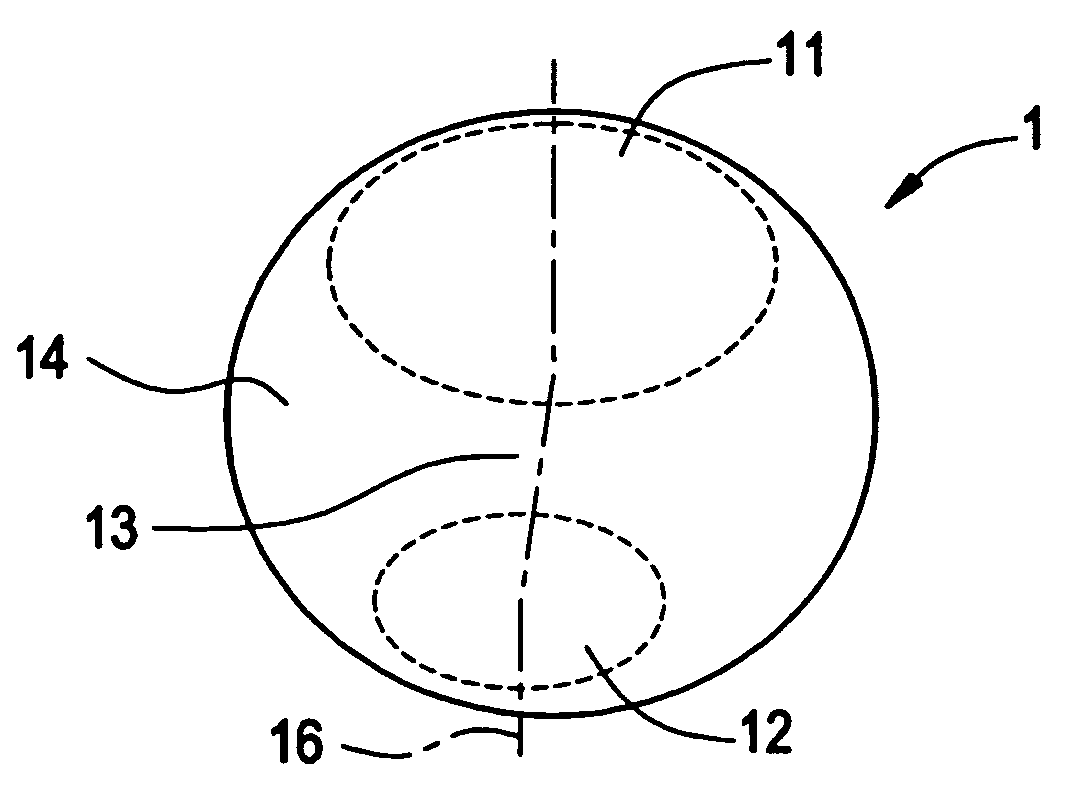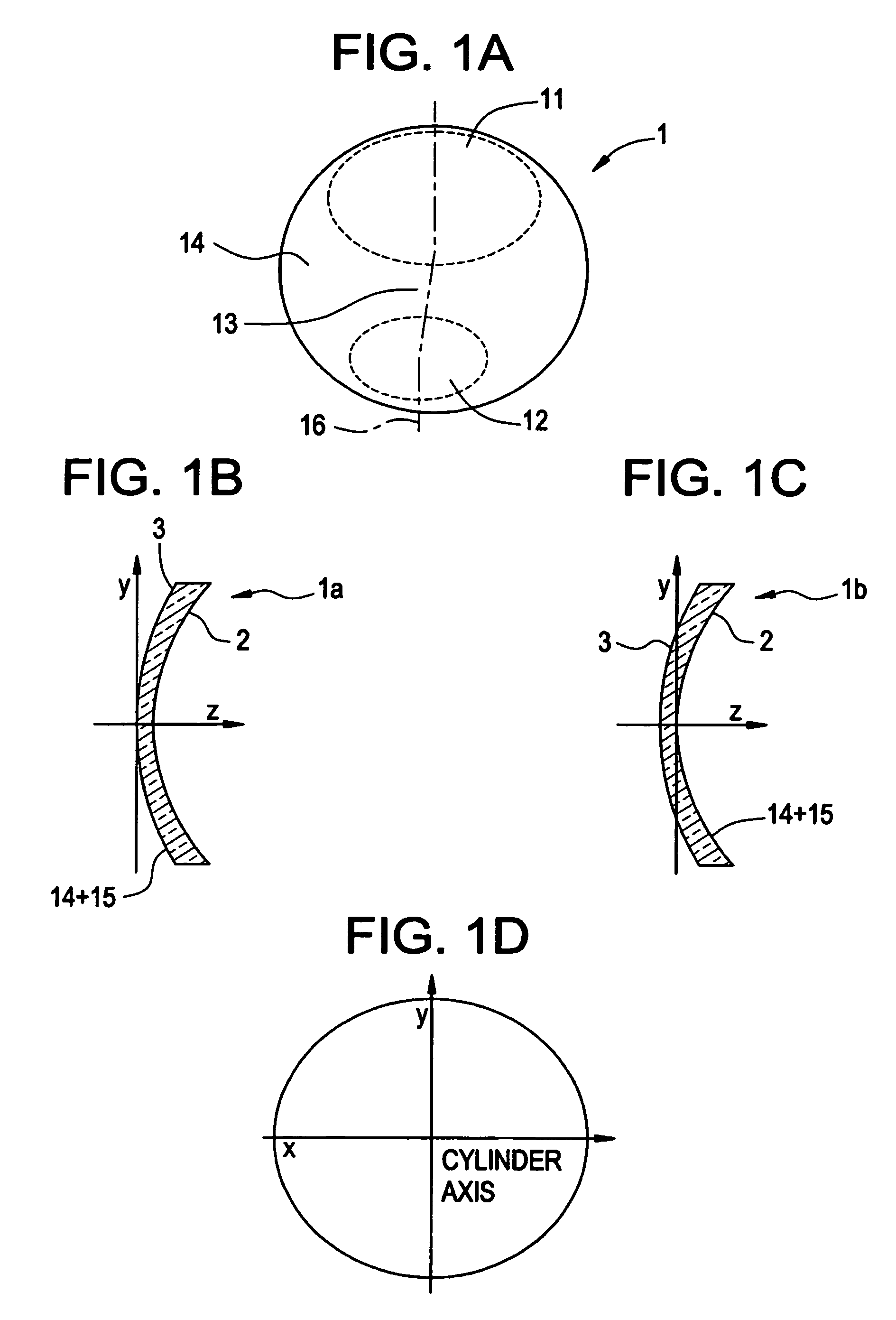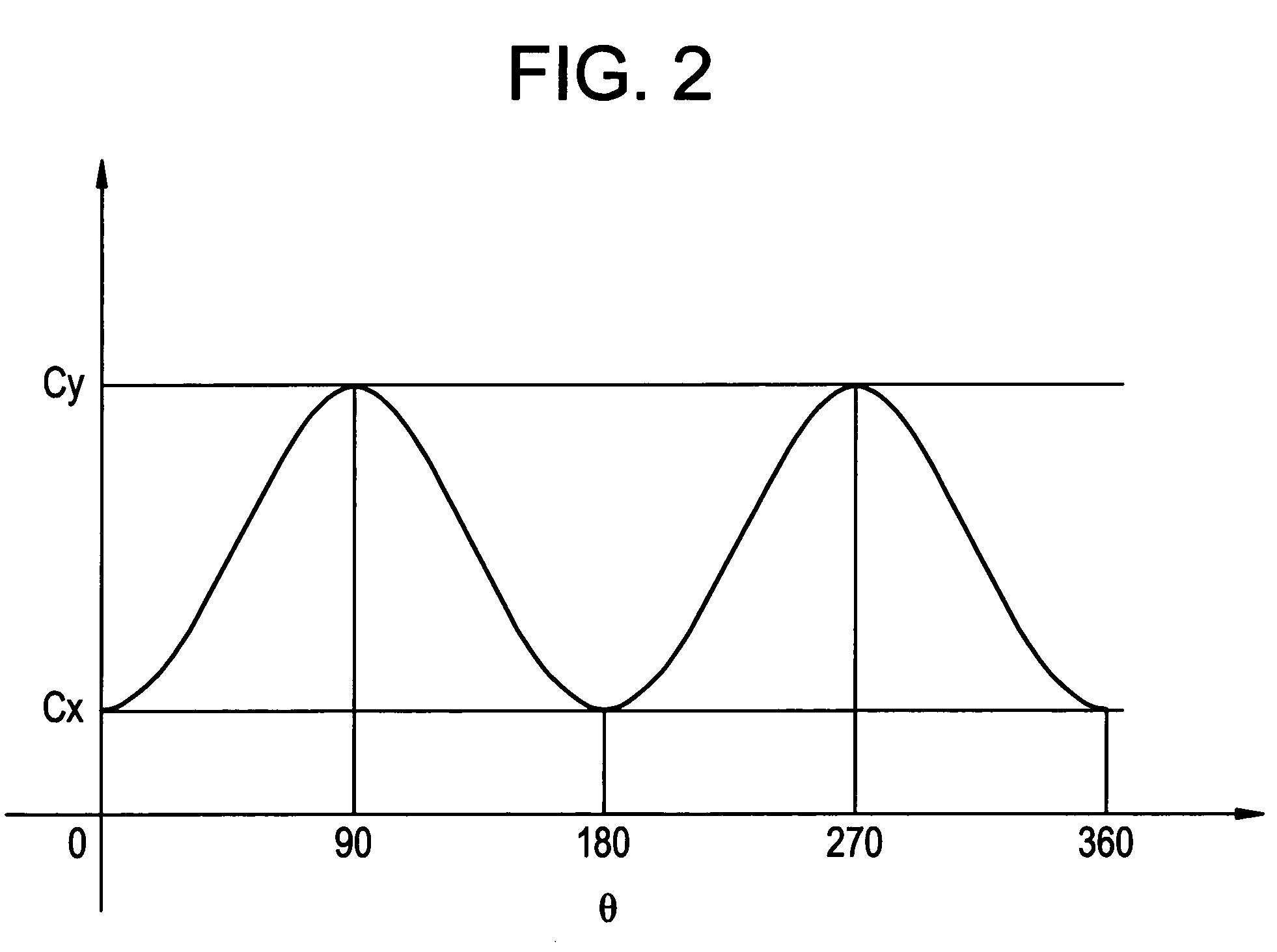Progressive multifocal lens and method of designing the same
a multi-focal lens and progressive technology, applied in the field of progressive multifocal lenses, can solve the problem of not particularly determined curve shape between the two parts
- Summary
- Abstract
- Description
- Claims
- Application Information
AI Technical Summary
Problems solved by technology
Method used
Image
Examples
embodiments
First Embodiment
[0084]The progressive multifocal lens of this embodiment is spherical on the side of an object and has a constant base curve of 4.00 D. The original progressive refracting interface before the toric surface is combined thereto is provided on the side of an eyeball, of which mean surface power is set to 4.00 D in a distance portion and 2.00 D in a near portion, and addition power is set to 2.00 D. The original toric surface has a cylinder axis of 90 degrees, a spherical power S of −2.00 D, and a cylindrical power C of −2.00 D. The original progressive refracting interface and the original toric surface are combined with combination expression (1) to obtain a combined refracting interface. The lens-center thickness t is 3.0 mm and the lend diameter d is 70.0 mm.
[0085]FIG. 3 shows the eyeball-side z-coordinate of the progressive multifocal lens of the first embodiment. FIG. 4(a) shows the astigmatism distribution of a conventional external progressive multifocal lens ha...
second embodiment
[0087]The progressive multifocal lens of this embodiment is spherical on the side of an object and has a constant base curve of 4.00 D. The original progressive refracting interface before the toric surface is combined thereto is provided on the side of an eyeball, of which mean surface power is set to 4.00 D in a distance portion and 0.50 D in a near portion, and addition power is set to 3.50 D. The original toric surface has a cylinder axis of 45 degrees, a spherical power S of 0.00 D, and a cylindrical power C of −6.00 D. The original progressive refracting interface and the original toric surface are combined with combination expression (1) to obtain a combined refracting interface. The lens-center thickness t is 3.0 mm and the lens diameter d is 70.0 mm.
[0088]FIG. 5 shows the eyeball-side z-coordinate of the progressive multifocal lens of the second embodiment. FIG. 6(a) shows the astigmatism distribution of a conventional external progressive multifocal lens having a progressi...
third embodiment
[0090]The progressive multifocal lens of this embodiment is spherical on the side of an object and has a constant base curve of 4.00 D. The original progressive refracting interface before the toric surface is combined thereto is provided on the side of an eyeball, of which mean surface power is set to 4.00 D in a distance portion and 2.00 D in a near portion, and addition power is set to 2.00 D. The original toric surface has a cylinder axis of 90 degrees, a spherical power S of −2.00 D, and a cylindrical power C of −2.00 D. The original progressive refracting interface and the original toric surface are combined with combination expression (2) to obtain a combined refracting interface. The lens-center thickness t is 3.0 mm and the lens diameter d is 70.0 mm.
[0091]FIG. 7 shows the eyeball-side z-coordinate of the progressive multifocal lens of the third embodiment. FIG. 8(a) shows the astigmatism distribution of a conventional external progressive multifocal lens having a progressi...
PUM
 Login to View More
Login to View More Abstract
Description
Claims
Application Information
 Login to View More
Login to View More - R&D
- Intellectual Property
- Life Sciences
- Materials
- Tech Scout
- Unparalleled Data Quality
- Higher Quality Content
- 60% Fewer Hallucinations
Browse by: Latest US Patents, China's latest patents, Technical Efficacy Thesaurus, Application Domain, Technology Topic, Popular Technical Reports.
© 2025 PatSnap. All rights reserved.Legal|Privacy policy|Modern Slavery Act Transparency Statement|Sitemap|About US| Contact US: help@patsnap.com



